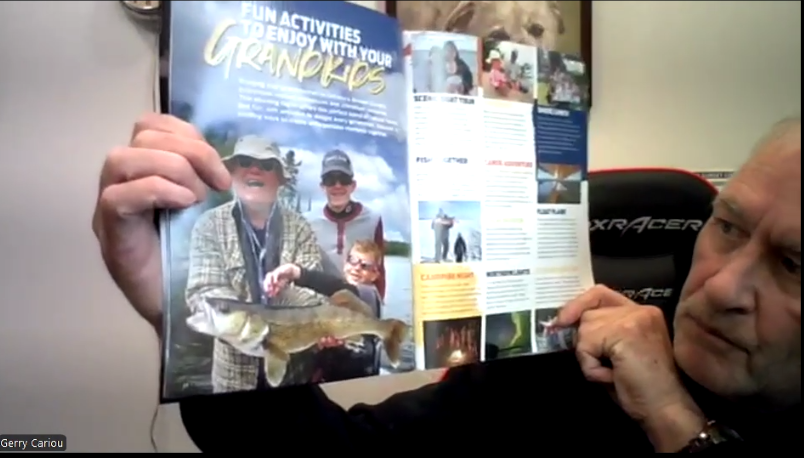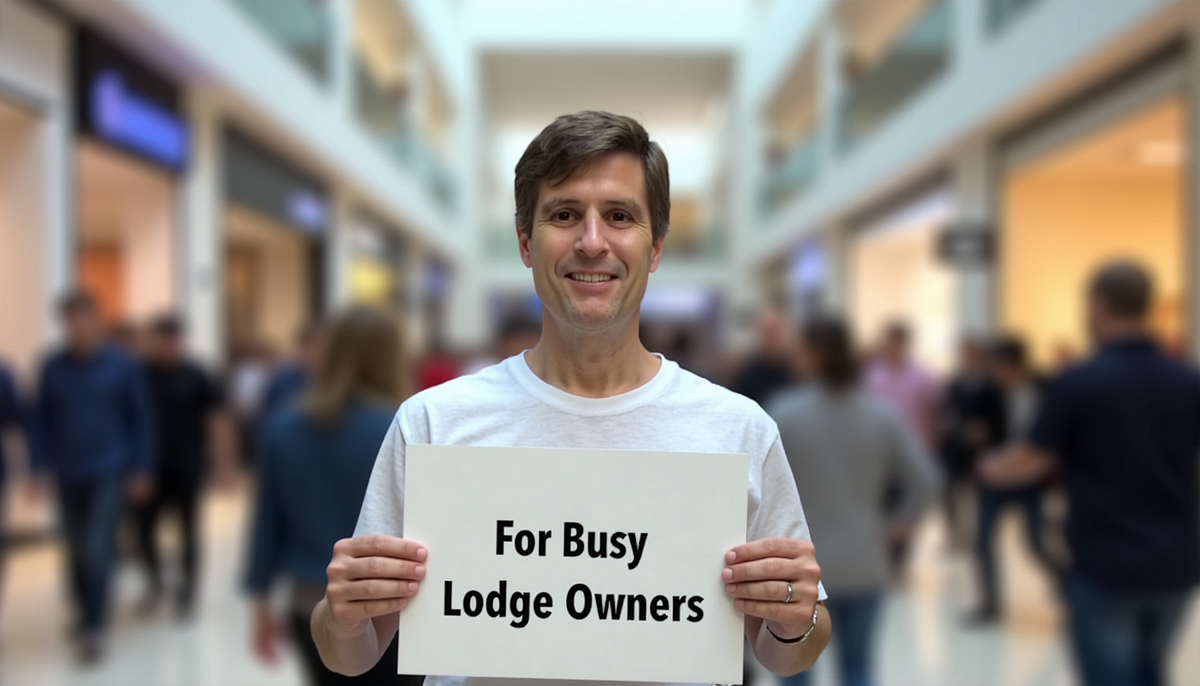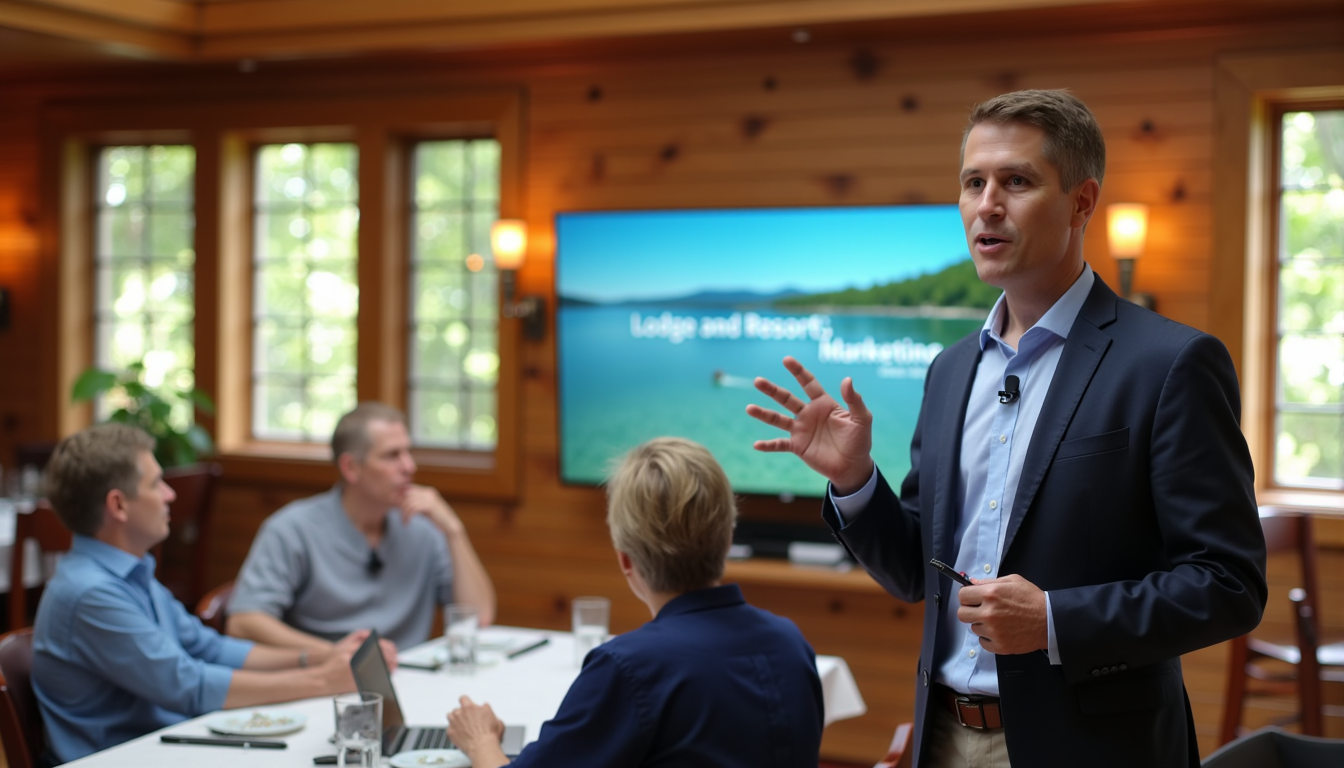
The numbers are more dramatic than I imagined.
A fundamental shift is underway that is quietly making businesses in the travel, real estate, and automotive service industries invisible to their best customers.
Traditional internet traffic is declining, not because of a temporary trend, but because of the permanent rise of generative AI search.
Your customers are no longer just Googling keywords; they are asking AI assistants for direct recommendations. This change isn't a distant threat—it's an urgent, ongoing reality. For businesses that fail to adapt, the consequence is being completely bypassed.
This guide is your strategic blueprint for this crisis, transform the treat of invisibility into a decisive and profitable first-mover advantage.
--------------------------------------------------------------------------------
1. The New Competitive Landscape: Why Your Customers Can't Find You Anymore
Understanding the monumental shift from traditional search to conversational AI is not just a marketing adjustment.
This is the most significant change in how customers discover businesses since the invention of Google.
For industries built on visibility—like tourism, real estate, and automotive services—failing to adapt is not an option.
The fundamental behavior of your customers has changed. The "old way" involved typing keywords like "fishing lodge Ontario" into a search bar, then scrolling through pages of results, ads, and comparison sites.
The "new way" is a direct conversation with an AI assistant like ChatGPT, Gemini, or Perplexity. Customers now ask specific, conversational questions, such as "Find me a remote walleye lodge in Northwestern Ontario for 6 anglers in June" or "What's the best local realtor for commercial property?"
This shift makes traditional websites invisible because AI tools are not designed to present lists for human comparison. They are designed to provide a single, curated, direct answer.
They bypass ads, skip over directory pages, and ignore old-school search rankings. With data indicating that 60% or more of searches now end without a click, your beautifully designed, keyword-optimized website is becoming a digital ghost, unseen by high-intent buyers who are getting their recommendations directly from an AI.
The shift from traditional Search Engine Optimization (SEO) to Generative Engine Optimization (GEO) is like moving from running a billboard on a highway to having a personal AI concierge who specifically recommends your business to the handful of high-value clients who ask for advice.
If your information isn't structured correctly, the concierge can’t even find your brochure, making you irrelevant no matter how good your business is.
This new reality of AI-driven discovery has tangible and severe financial consequences for businesses that remain unprepared and invisible.
2. The High Cost of Inaction: Quantifying Your "Invisible Losses"
The cost of failing to adapt to the AI search revolution is not a hypothetical risk; it is a quantifiable, ongoing financial drain. For every month a business delays modernizing its digital presence, it is actively losing revenue to competitors who have already made the shift.
This section breaks down the precise financial mistake businesses are making by remaining invisible in the new search landscape.
Financial Trajectory: A Three-Year Comparison
Lodge A: The Cost of Inaction | Lodge B: The First-Mover Advantage |
Year 1: The Foundation Relies on declining Google traffic and outdated SEO. The business loses an estimated 36,000 in annual revenue** by missing just two groups of four guests monthly. It also continues to pay **2,000+ in webmaster retainer and update fees. This results in a total cost of inaction exceeding $38,000. | Year 1: The Foundation Makes an initial investment in website, email list modernization and content restructuring. Immediately eliminates over $2,000/yr in webmaster fees and gains the ability to post a video and automations share on all platforms, create an ai structured blog post and notify social profiles. |
Year 2: The Widening Gap The cumulative revenue loss now exceeds $72,000. The owner is now spending 3x more on ads and marketing just to try and compete with video first, AI-optimized businesses, playing a losing game of catch-up. | Year 2: The Widening Gap Revenue accelerates as its compounding content assets—videos, Q&A pages, and reviews—begin to dominate AI recommendations. The initial investment becomes a tangible business asset that consistently attracts high-intent, tech-savvy customers. |
Year 3: Market Domination The cumulative revenue loss surpasses $108,000. The business is forced to accept a long-term decline in revenue and market share, struggling for sustainability in an AI-dominated market. | Year 3: Market Domination The business is now "untouchable." It dominates video platforms and AI recommendations, leading to better profit margins, less dependence on paid ads, and a direct email relationship with its growing customer base. The automated marketing system adds significant value to the business itself. |
The central argument is inescapable.
Pop quiz: What costs you $36,000 but only saves you $2,500? Skipping the necessary website modernization.
The financial pain of being invisible is real, it is severe, and it is a bleed that can be stopped. The solution is not more spending, but a more intelligent strategy.
3. The Solution: Shifting from PPC and Boosted Facebook posts to Video First with Automated Generative Engine Optimization (GEO)
The definitive solution to the invisibility crisis is sharing genuine experiences with a video-first approach, backed by content formatted for Generative Engine Optimization (GEO).
This is not about building an expensive new website or chasing fleeting algorithm changes. A video first approach is a simple strategy of answering questions in 90 second clips - backed by simple automations that repurpose the content everywhere for a consistent message.
GEO is the process of creating text content to support those videos, so that AI can understand, remember, and cite your business, videos and text content as a trusted, authoritative resource when customers ask relevant questions.
GEO is fundamentally different from the search optimization strategies of the past, and when we combine with the personal experiences and stories in a video format - we can adapt our presence online to remain current and viable.
Traditional SEO: Focuses on being included on a list for human comparison. The goal is to rank high for specific keywords so a person can click through multiple sites and decide.
Generative Engine Optimization (GEO): Focuses on being cited as the specific, trusted resource. The goal is to provide structured, factual answers or personal experiences and stories that answer conversational questions. When the stories on your website have a high engagement rate from verified social profiles, the AI will recommend your business directly.
The core problem with static, keyword-optimized websites is that they are organized for human eyes, not for machine understanding. AI assistants cannot "see" photos or interpret vague marketing copy; they need structured, factual content that they can parse, verify, and use to formulate a direct answer.
Without this structure, your website is effectively useless to an answer engine.
The "dream state" for a business owner is a simple, automated process. Your existing website is transferred to a modern platform like WordPress. A Managed Content Protocol (MCP) is connected—a system that allows your AI assistant to securely interact with your website's content—linking your site to your AI tools.
Suddenly, you gain the ability to update your own website using simple conversational commands from your phone—saving over $2,000 annually in webmaster fees and gaining effortless control over your most important business asset.
This strategic shift from SEO to GEO, the embracing of AI to reduce online costs is the key to reclaiming your visibility and building a sustainable pipeline of new customers in the AI era.
4. The Automation Advantage: A Practical Blueprint for Dominating the New Search Era
Achieving the AI-Ready Advantage is not a complex, technical nightmare. It is a straightforward, strategic process that transforms your website from a static digital brochure into an intelligent, automated business asset. This blueprint outlines the practical steps to build a system that consistently attracts and converts high-intent customers with minimal ongoing effort.
4.1 The Content Engine: Automate Authority and Visibility
The foundation of modern marketing is simple, authentic content that answers real customer questions. This workflow makes creating that content effortless and consistent.
A business owner takes just two minutes to record a short video on their phone answering a common customer question (e.g., "When is the best time for walleye fishing at your lake?"). They upload that single video to YouTube. From there, AI-powered automation takes over:
A draft blog post is automatically created from the video's transcript, optimized for AI citation and embedded with the original video.
The video clip is automatically shared to TikTok, Instagram, and Facebook, reaching different audiences on their preferred platforms.
This single, two-minute action accomplishes three critical goals simultaneously: it makes marketing easy and consistent, it builds the website's authority with content that AI can cite, and it uses social media to support and amplify that authority.
Using this method, the story from one happy guest can be transformed into 15 unique pieces of content, creating a compounding marketing machine.
4.2 The Trust Engine: Create an AI-Proof Customer Lifeline
In an era where AI can act as a gatekeeper, building a direct relationship with your customers is paramount.
Email Marketing: Capturing customer emails is your lifeline. By offering something of value, like a seasonal fishing report or a local property guide, you can build an email list. This creates a direct communication channel that you own and control, one that no algorithm or AI assistant can block.
Obsessive Review Collection: AI trusts authentic customer reviews as a primary source of truth. Your business must implement an automated process to send every single guest a request for a review after their visit. The goal is to acquire 50+ high-quality reviews in the first year, as this volume, recency, and content are critical signals that AI uses to determine who to recommend.
4.3 The Technical Foundation: Make Your Business Legible to AI
For AI to trust and cite your business, your website's technical foundation must be sound. These three steps are non-negotiable for becoming AI-ready.
Use Schema Markup: This is specialized code that acts as a "cheat sheet" for AI, explicitly telling it what your business is and what you offer (e.g.,
LocalBusiness,LodgingBusiness,AutomotiveBusiness). It removes all ambiguity and allows AI to understand your services with perfect accuracy.Claim Your Google Business Profile: This is the single most important action you can take. Google's own AI pulls heavily from its Business Profiles. Your profile must be complete, with 50+ high-quality photos, a detailed description, and be updated weekly with posts about current conditions or offers.
Structure Content as Answers: Your website content must be methodically restructured to move away from broad marketing claims and toward providing clear, direct answers to the specific questions your customers ask. This transforms your site from a brochure into an "answer engine"—the exact type of resource AI is designed to find and cite.
Individually, these are technical tweaks. Together, they transform your website from a passive brochure into an active, structured database that AI is built to trust and promote. This isn't an AI 'hack'; it's superior marketing fundamentals.
5. Your First-Mover Advantage: Secure Your Future Before the Window Closes
While most of your competitors remain confused about their declining traffic and uncertain about the future, a critical 12-to-18-month window of opportunity has opened. Proactive businesses that act now can establish a dominant position in AI search results that will be nearly impossible for latecomers to overcome for years to come.
Business owners are standing at a fork in the road and face a stark choice:
Path One: Do nothing. Continue to rely on outdated strategies and become increasingly invisible to new customers. Watch as competitors who adapt capture a growing share of bookings, leaving you to wonder why the phone stopped ringing.
Path Two: Restructure your existing content for the new video-first, AI automation reality. Make a strategic investment to ensure your business is the one recommended when high-intent customers ask for suggestions, securing a steady stream of your ideal clients.
Do not let your competitor be the one who discovers how easy it is to create and distribute content that captures the heart of the new market. The time to act is now, while the advantage is still available. Take the first step toward securing your future.
Because we dedicate a two-week build slot for each client to ensure flawless execution, our capacity is strictly limited to three new projects per month. Get your free AI visibility report to see your specific revenue opportunity and secure your place before your competition does.



